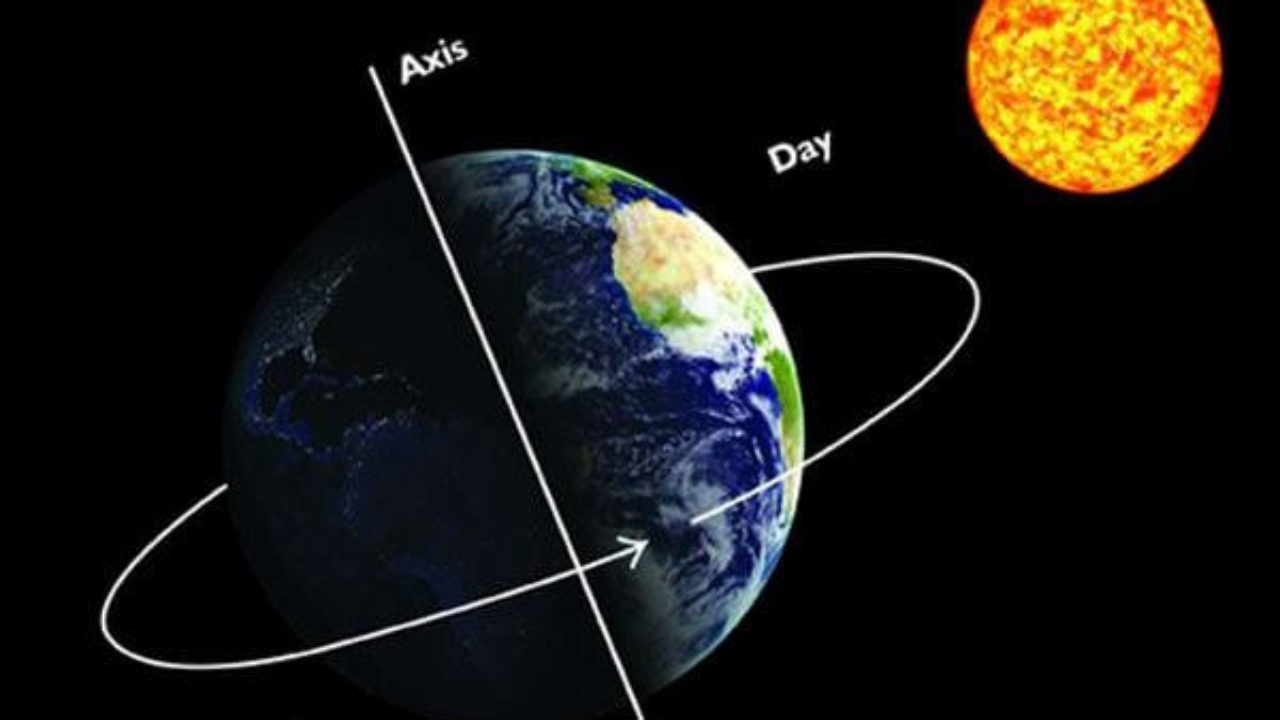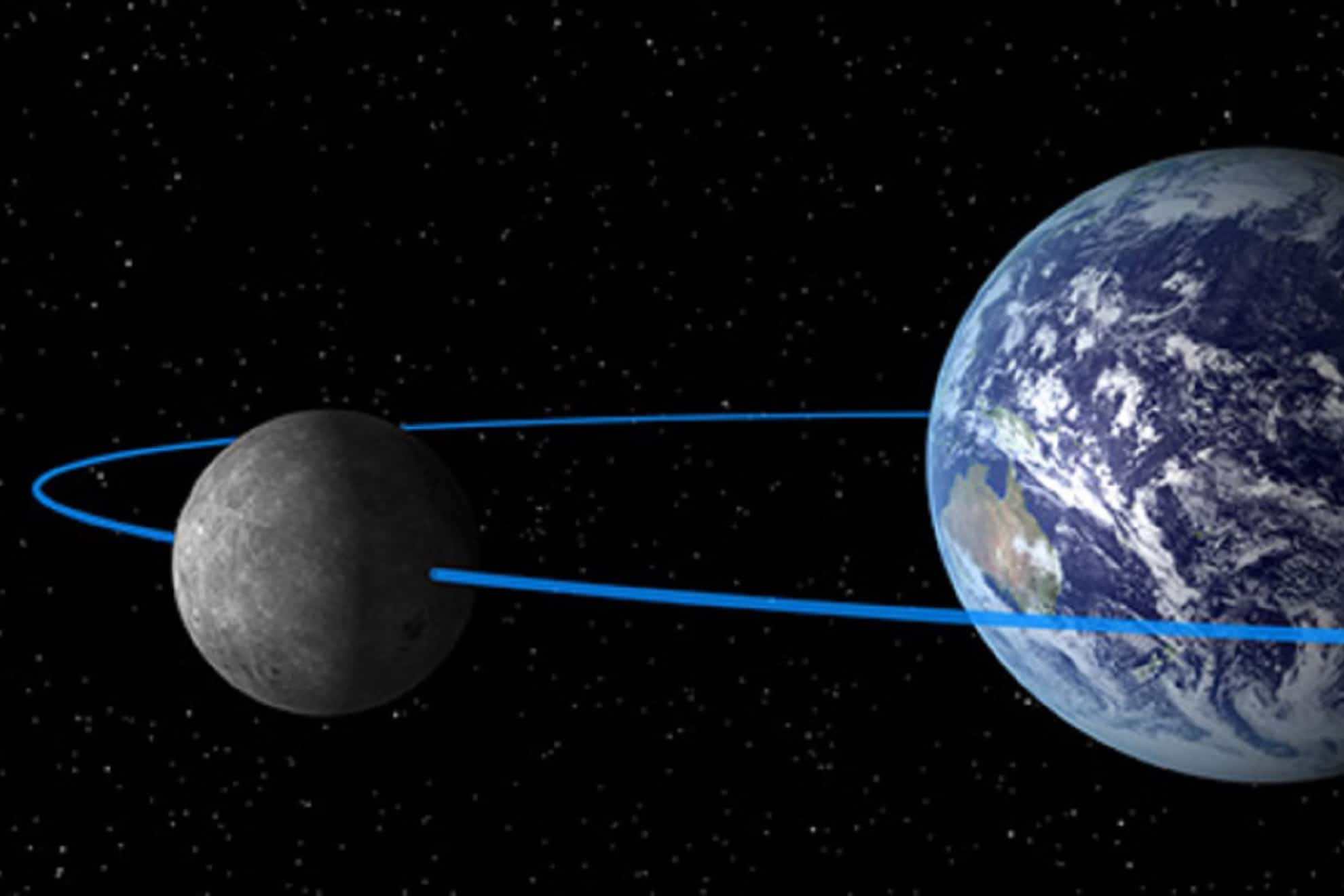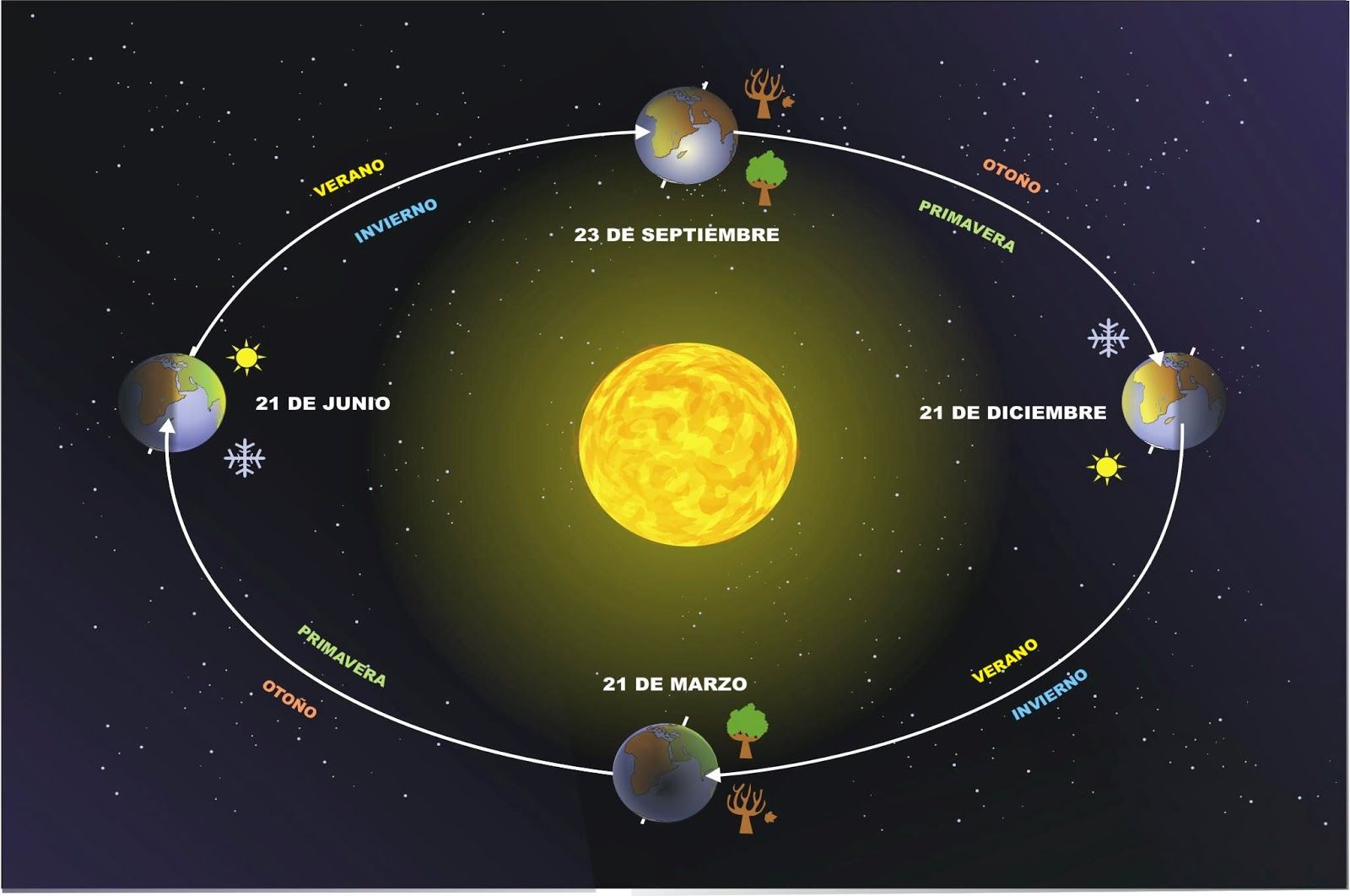Rotation is a movement carried out by the Earth and several planets, through which they can rotate around their axis and if you are interested in knowing everything related to this movement of earth rotation We invite you to read this article and acquire the knowledge so that you understand what it is about and what are the effects it produces.

What is the Rotation of the Earth?
It is one of the Earth movements which it executes in its evolution in space, which is manifested by a rotation on the axis of our planet. The rotational movement of the earth it is carried out from west to east, just as all the planets in our solar system do, except for Venus, which does it the other way around, which is why on our planet the sun always rises in the east and hides in the west.
If the north pole is assumed as reference, we will observe that the Earth moves in the counterclockwise direction. A full movement of earth rotation in relation to our fixed star, which is the sun, it takes 23 hours, 56 minutes and 4 seconds.
This movement can be demonstrated by means of the Foucault pendulum experiment, whose imposing mass is suspended from a point at a high altitude in order to separate its movement from the one executed by the Earth in rotation, which means separating it from the ground, but not It can be completely separated from the movement of the point of height from which it is suspended, but the effects of the earth's rotation can be appreciated.
At what speed does the Earth rotate?
Earth's rotation speed it is 1670 kilometers per hour at its equator, but this speed decreases as we get closer to the poles, where the speed is zero, because they are the reference points of the Earth's axis.
However, scientists have been able to determine that, over millions of years, the speed of rotational motion of the earth has been decreasing, due to the effect of the exchange of gravitational forces with the Moon movements.
On the other hand, phenomena have occurred whose effects have been totally contrary, that is, they have increased the movement of earth rotation in three microseconds, like the earthquake of colossal proportions that took place in the year 2004 in the Indian Ocean.
Another fact that affects the rotation of the Earth is the demonstrated postglacial adjustment, which has been occurring since the last glaciation, and which favors the modification of the location of the terrestrial masses and, as a consequence, affects the moment of inertia and for reason of the law of conservation of angular momentum, has also modified the rotation span.
The measurement of the earth day
It is about scientists being able to measure the exact day of the rotation movement. Due to the fact that this value has been modified, becoming shorter each time, which has caused the need to regularly adjust the measurement of time with an atomic clock, which is the one with the highest precision and is not linked to the speed of rotation of the Earth.
Of course we cannot fit the persistence of the earth's rotational motion to an atomic clock, because it does not depend on the duration of the rotation, rather the opposite occurs, which means that when an atomic clock marks the time one second ahead of the movement of the terrestrial rotation, which occurred at the beginning of the year 2017, we proceed to eliminate that second of the precise measurement of the movement of the terrestrial rotation.
In any case, the excessive precision with which we now have to be able to measure the Earth's rotation does not have much to do with the effects and consequences that this movement produces.
mean solar day
This measurement is calculated in midpoints, so the average of the solar day in the span of an entire year is a mean solar day, which is composed of 86,400 mean solar seconds. At present, each of these solar seconds is infinitesimally longer than a normal SI second. This occurs because the average solar day on Earth is slightly longer today than it was in the XNUMXth century, caused by friction caused by the tides.
The average subsistence of the mean solar day, since an interpolated second was introduced in the year 1871, has been 0 to 2 ms longer than 86,400 SI seconds. The variations produced by the core-mantle coupling have an extension of about 5 ms.
The mean solar second between the years 1750 and 1892 was chosen in 1895 by Simon Newcomb as an autonomous unit of time thanks to his Tables of the Sun. These tables were used to estimate the ephemeris of the planet between the years 1900 and 1983, which is why which this second was baptized with the name of the second ephemeris. In the year 1967, the SI second was equated to the ephemeris second.
Stellar and sidereal day
The span of earth rotation in relation to the fixed stars, it was given the name stellar day, by the International Service for Earth Rotation and Reference Systems.
Likewise, the period of earth rotation associated with the precession of the moving mean vernal equinox, which is called a sidereal day, is 86,164.09053083288 seconds of mean solar time (UT1) (23h 56m 4.09053083288s). Due to the results of these measurements, it turns out that the sidereal day turns out to be shorter than the stellar day by about 8,4 ms.
Both the stellar and sidereal days are shorter than the mean solar day by about 3 minutes and 56 seconds. If you are curious, the tables for the length of the mean solar day in SI seconds are published by the International Earth Rotation and Reference Systems Service (IERS), for the periods 1623-2005.10 and 1962-2005.11.
Consequences of Earth's rotation
El rotational movement of the earth it has a very complicated effect on bodies that are in motion on the earth's surface. In general terms, it can be stated that the peculiarities of this effect are the following:
apparent effects
The former are a variety of apparent or unreal effects. Although this idea seems to be absurd, it will help us to clarify how the effect generated by the movement of the earth's rotation is produced, which was explained by A. Gil Olcina in the book General Geography I, when exposing the characteristics of the Coriolis effect relative to the atmosphere.
When this statement is made, it can be understood that it is not a true effect, but rather an apparent one, since what really moves is the surface of the Earth, during the rotation movement and the atmospheric wind; the waters of lakes, rivers, Seas and oceans they only move by inertia, that is, derived from this rotational movement, but in the opposite direction.
Other effects
The movement of earth rotation has a three-dimensional effect in relation to the bodies that move on the surface, in particular, on the liquids (rivers, seas, oceans, lakes) and gaseous materials present in the atmosphere, as occurs with the surface wind, the convention , subsistence and other phenomena.
It has also been observed that this effect occurs in some bodies of solid consistency, such as oceanic, fluvial, lacustrine or terrestrial ice. It is an effect of inertia, which occurs in the atmosphere and in the hydrosphere, including continental and marine waters. Examples of this interaction with the winds are the planetary winds, the North Equatorial Current, the Antarctic Circumpolar Current and others.
Succession of day and night
As the earth is a spherical body, every point that is found on its surface on a daily basis will transit from light to darkness, that is, it will go from day to night, with the exception, of course, of the polar areas , in which the tilt of the earth's axis modifies this duration, because six months of light spend six months of darkness.
This effect is very relevant, because it governs the normal life cycle of animals, plants and especially that of human beings. In turn, the continuation of day and night establishes the duration of daily exposure of the Earth's surface to solar radiation.
They also generate a number of compensation procedures between the solid, liquid and gaseous parts of our planet that significantly moderate the extreme effects that would occur if direct exposure to solar radiation were permanent, as well as its non-existence in the dark hemisphere.
The fact is that the atmosphere and, in particular, the hydrosphere, acquire a large portion of heat during the day and release it partially during the night, thereby facilitating the permanence and evolution of life on Earth. Effect that also occurs in the Earth's lithosphere.
Equatorial bulge and polar flattening
Another effect of the movement of earth rotation it is the creation of a centrifugal force that produces its greatest force in the equatorial area, which has produced a thickening effect in the equator of our planet, both in the geosphere, as well as in the hydrosphere and above all, in the atmosphere .
This centrifugal force has caused our planet to have a very peculiar shape, due to the observable equatorial bulge, which includes the solid part and has also generated a flattening at the poles.
The fact is that this shape, flattened at the poles and bulging at the equator, governs oceanic dynamics, regulating the currents of the seas and oceans, as well as the dynamics of the atmosphere. This means that the bulging of the marine waters and the atmosphere at the equator of the planet is added to the bulging of the solid part of the Earth.
At the same time, the effects of this bulge are reflected in a lower density of the bodies that are in motion, when they are located in the equatorial line and in a large area of the intertropical zone, producing an inertial force in all bodies. that they are in motion. Let's give some examples:
pendulum clock
The proof of this effect was verified when the French government sent a pendulum clock calibrated with great precision to French Guiana, in order to measure time officially. But immediately it was possible to verify that the time advanced each day considerably.
The reason for this is that a pendulum clock has a graduation that allows it to regulate its lower or higher height, with the obvious result, inverse to that of a metronome, when the weight of the pendulum is lifted, its oscillation becomes faster and when it goes down, it gets slower.
So, if the measurement of time suffered advances in a pendulum clock that was graduated in Paris, this meant that the entire pendulum clock located in French Guiana was at a higher altitude, in relation to the center of the Earth, located in the equatorial strip, than those located in France.
ocean currents
In the hypothesis that the continents did not exist, we would only have an equatorial marine current in the intertropical zone, which, due to inertia and centrifugal force, would move along the Earth's equator, in the opposite direction to the rotation movement, that is, from East to west. It has been proven that the continents of Asia, Africa and America, due to the morphology of their coasts, separate and modify this current and others that are similar.
The great equatorial current would fork, in turn, into two hemispheric currents, which would form as a way of compensation in a west-east direction, as is the case of the Gulf and Kuro Shivo currents, to the south, which join the the Antarctic circumpolar current.
The winds
Absolutely all the winds on the planet have their origin in the rotational movement of the Earth's atmosphere. But the winds do not have their origin only in the pressure difference between the different air masses, but rather their own movement and path cause, to a greater extent, the pressure differences between them.



